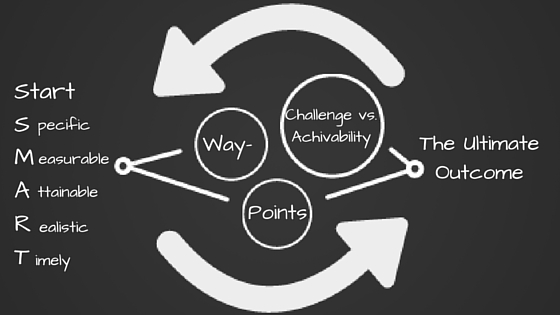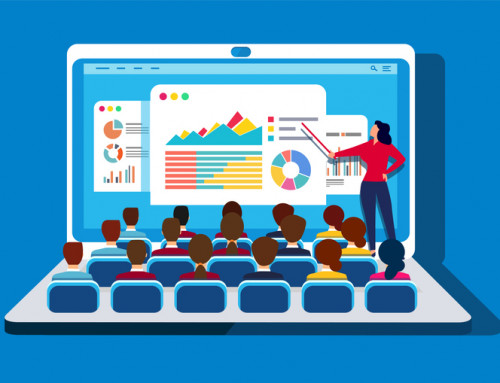Happy New Year! To kick off 2016, we’re going to look at what we can accomplish with a different approach to structuring your eLearning course. By the end of this article, you’ll be able to:
- write effective learning- and course-objectives.
- outline the structures for different stages of training.
- create clear pathways to realizing the outcomes for your eLearning courses.
The key to effective eLearning is to start with the ultimate outcome (or results) of the course. Then, work backwards from the future outcome to the present. Confused? Don’t be. We actually do this regularly. For instance, whenever you plan a long road trip, you first state your destination, and the intended arrival date and time. Then (often without realizing you’re doing it) you plan your journey backwards from that future date and time to the present. You designate waypoints, landmarks or milestones that let you know you’re on the right track. Embedded in those waypoints and milestones are the assessments and the plans for actions that support your progress toward your destination.
Here’s a basic framework to help you organize your customized content for eLearning courses.
- Start SMART (Specific, Measurable, Attainable, Realistic, Timely)
Begin with a clearly stated, measurable, “big-picture” course goal for your potential learners. Ask yourself: “When they complete the elearning course, what exactly will learners have gotten from participating?”- Write simple sentences that list what your learners will be able to do by the end of the course. Devote each sentence to a single outcome.
- Use concrete action words such as “write,” “repair,” “assemble,” etc. Use a single verb for each outcome-sentence you write.
- Avoid verbs like “understand,” “become aware of” and “know.” Those verbs are “mushy” and results related to those kinds of verbs cannot be effectively or accurately measured.
- State your goal in terms of measurable results that have a real impact on the real world in real time. Examples include:
- increase of x number of widgets produced over z weeks.
- y% reduction in safety incidents by the end of the next quarter.
- One example of a particularly effective goal is, “in an emergency, evacuate 100% of the passengers from the aircraft in less than 90 seconds.”
- Create waypoints that course participants need to achieve to realize the larger goal of the elearning course.
Ask yourself the question: “For the next step to be successful, what will learners need to have learned/accomplished?”- Begin with the final waypoint before the very end of the elearning course. In order to realize the big-picture outcome, what will that last step need to look like? Work backwards from the penultimate milestone to the present moment.
- Each waypoint represents a step toward the big picture. A waypoint may be a task, a nugget of information, or a process that relates to the big-picture goal. Each waypoint could be created as a separate module of training. Keep your waypoints relevant to your business/industry.
- Create a sub-outcome for each waypoint that contributes to the overall goal of the elearning course.
- Reward the successful passage of each waypoint. Keep it light and engaging. A simple points-system, or the ability to progress to the next level is very effective for providing a sense of achievement.
- Find a balance between challenge and achievability for each milestone.
Too easy, and participants get bored. Too difficult, and participants may get frustrated and discouraged.- Find out what your learners’ needs are.
- What kinds of challenges are relevant to their daily experience on the jobsite?
- What kinds of rewards would be meaningful to them in a training program?
Working backwards from a stated (future) goal provides a very powerful foundation for effectiveness. For one thing, it’s very grounding to declare an outcome, then take the required actions to realize that outcome. This also provides a high level of flexibility to the planning process. When you combine this form of planning with the power and adaptability of eLearning, you give yourself the gift of empowering your workforce to win. And when your employees win, your customers win. Which means your organization wins. Which means you win.
We want you to arrive on December 31, 2016 having experienced the greatest breakthroughs possible through effective eLearning. We’re happy to talk with you about creating the kinds of programs and training for your organization that maximizes your resources for optimum success throughout the new year.
Please feel free to contact us at info@kmilearning.com
May 2016 bring you the best of what’s possible in eLearning breakthroughs!




[…] Read the full story by KMI Learning Blog […]